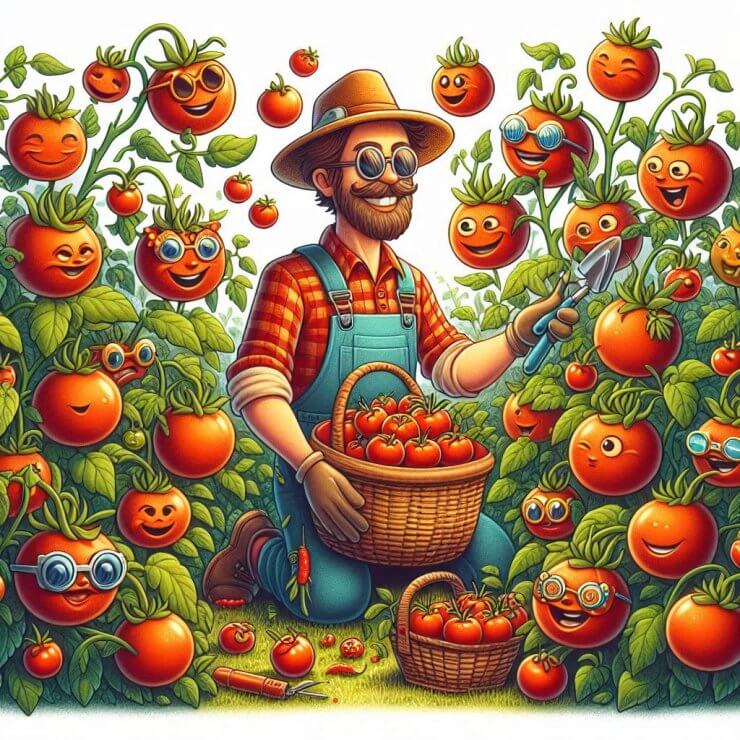Read by Michael Flamel

Tomato season starts in January when the ground is still frozen and a few tiny red tomatoes cling to lingering vines like ornaments dusted with snow. They are splashy color images of what could fill seed catalogs and the Winter gardener’s empty head with visions of sandwiches decked with the garden’s bounty.
Already hungry for the season’s first ripe tomato, I devour descriptions that must have been written by tomatoes. I search for perfect varieties. Mama Mia for sure, maybe Tomatoberry Cherries. Could one go wrong with a fruit named Tomatoberry?
It’s early morning, and seeds meet soil blocks. The full moon is visible—it matters—and coffee cools on a shelf above, watching hopefully. Write everything down now. Once they sprout, they all look alike.
In a week, a tiny forest is staring back demanding more room: 4-inch pots would be nice, they murmur, and this year, don’t hold back on the high-test soil mix we know you are brewing. How do they know this? With remaining energy, I label hundreds of Popsicle sticks with everybody’s name. Ready, set, transplant!
Meanwhile, sawhorses have run out with scraps of lumber forming temporary barracks for an adolescent army of wanna-be veggies. They are growing fast now so I water with a hose from a distance for safety. Why did I plant so many?
The last threat of frost mostly gone, plants go feet first into the garden. A legion of companions look on, green with envy. These extras are force-marched into the back of the old red Suburban and driven to a plant adoption center. Why did I plant so many?
It’s wait, water, watch the weather. Not too hot or cool. Go say “Hi!” every morning. Plants like a kind word, too. Finally in early July, unless young son Joe eats it first, one ripe tomato will adorn the branch of a very proud parent.
Then the onslaught. A red army occupies every corner of the kitchen. It will not be subdued without a fight. After much slaughter, dull knives rule. The vermillion presence is reduced to a thickening sauce on the stove’s top.
Stragglers continue to sneak in, no doubt trying to seed their future. Instead, they are sliced to ribbons that deck sandwiches and feed dreams of bigger, better gardens next season. Why, it’s only four months to January. ❖
About the Author: Brian Warner is a published author and a member of a writers group at Mule Creek State Prison in California. A lifelong gardener, he delights in sharing his passion through prose and poetry, capturing the humor and heart in the everyday dance of tending a garden.


 Previous
Previous

